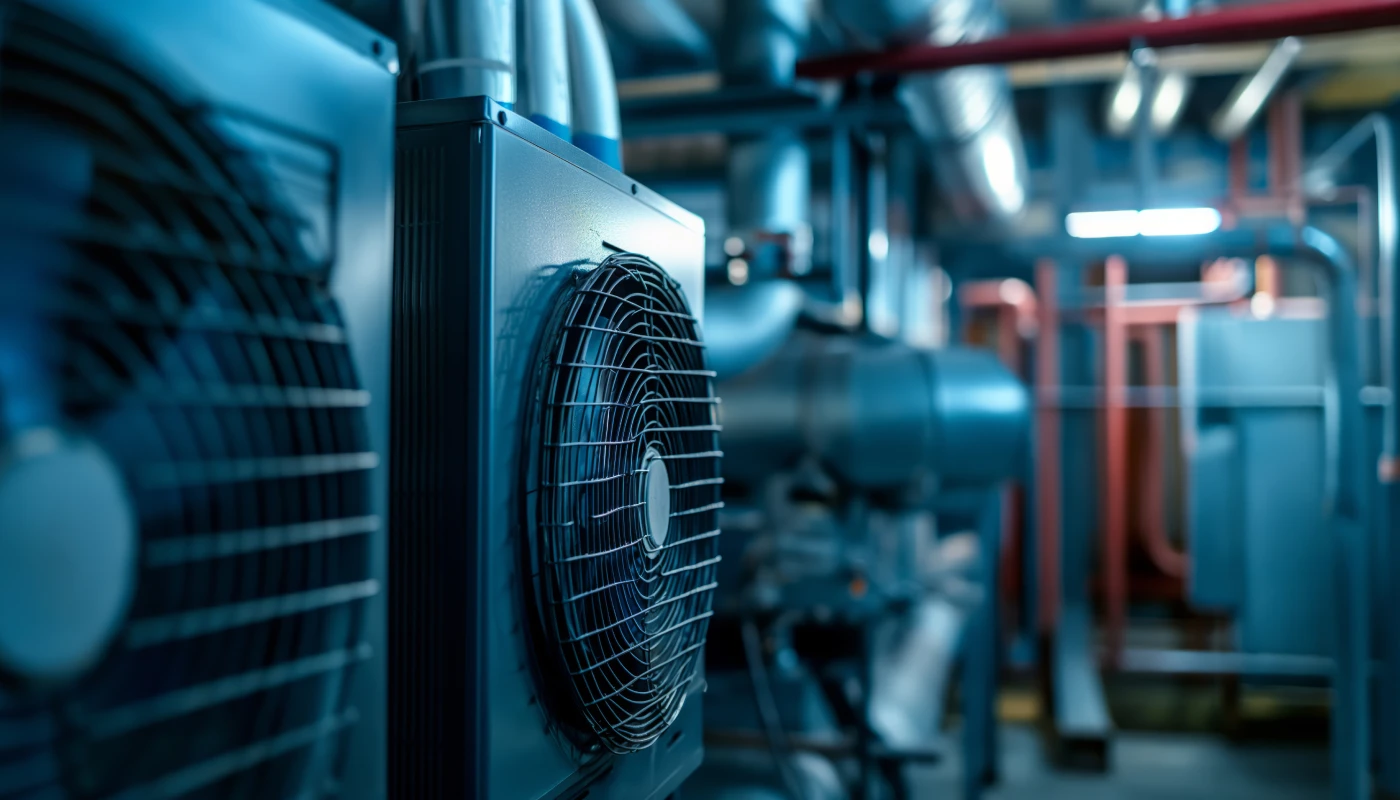If you've ever stepped into a room where the air hangs heavy, you've felt how air, or more correctly; bad air, can steal both your energy and focus. Having a good indoor climate goes beyond mere temperature control and can be described as having plenty of "fresh air" without harmful pollutants.
As an employer or building manager, you are responsible for ensuring a safe environment. That means adhering to regulations to protect the health of employees, tenants, and visitors.
That includes securing the correct air quality.
What is a good indoor climate?
A healthy indoor climate has fresh air, moderate temperature, and no harmful radiation.
Indoor air is, by definition, contaminated air from the outside. Think of it: what we breathe inside is really a mix of outdoor air, and pollutants from construction materials, people, machines and other things that one finds indoors. With today's well-insulated buildings, these pollutants can linger if there aren't systems to remove them. Thats why, at the heart of every healthy indoor climate, is an efficient ventilation system.
Consequences of bad indoor air quality (IAQ)
The most common cause of poor air quality is that the building has an old or poorly maintained ventilation system.
Poor ventilation traps pollutants like carbon dioxide (CO₂), volatile organic compounds (VOCs), and particulate matter, leading to health risks and decreased productivity. Because of this, various rules and regulations have been established by the European Union, the World Health Organization (WHO) and others at both international and regional levels.
Requirements for ventilation and air quality in commercial buildings:
Different requirements for ventilation must be met for buildings in different parts of the world.
A general rule is that a building's ventilation must be adapted to the number of people using the building, pollution level, and moisture in the rooms. Pollution in harmful concentrations is prohibited, as this can be a health hazard.
Remember
Workrooms and staff rooms must be designed and furnished to have a satisfactory climate regarding temperature, humidity, drafts, and air quality.
- The air quality in areas where workers stay must have a proper oxygen content.
- Ventilation systems must be equipped with an error notification, if necessary, for the health of the employees.
- Underground areas, where access is permitted, must have a good supply of fresh air.

European guidelines:
The European framework, or ventilation guidelines, emphasizes a holistic approach. A key aspect of these guidelines is the specification of minimum ventilation rates necessary to maintain healthy indoor environments. For example, the guideline proposes that commercial buildings must meet an average ventilation capacity of 7 L/s per person plus 0.7 L/s per m2 floor area, or alternatively CO₂ concentrations of 900-1200 ppm, depending on occupant density. (REHVA, 2023).
ASHRAE Standard 62.1: A global benchmark
While focusing on the EU, it's beneficial to reference the ASHRAE Standard 62.1, which serves as a benchmark internationally. This standard outline minimum ventilation rates in commercial buildings and suggests that ventilation rates during occupancy should never be below 4 L/s per person, ensuring the dilution of indoor pollutants. For good indoor air quality, ASHRAE recommends the CO₂ concentrations to be at or below 1000 ppm in schools, and 800 ppm in offices. (ScienceDirect).
How do you know if your air quality is good enough? How do you improve it?
To meet guidelines and provide sufficient fresh air, you should:
- Look for areas where there is no natural ventilation (open windows, doors, or vents) or mechanical ventilation (fans or ducts bringing air in from outside).
- Identify areas that feel stuffy or smell bad.
- Regularly inspect and maintain HVAC systems.
- Use air quality sensors to monitor levels of CO₂, VOCs, and particulate matter. Many of our customers utilizes Airthings sensors, for instance. (Ready-certified equipment).
Monitoring CO₂ levels, VOCs, particulate matter, and humidity can help improve health and productivity while also ensuring your HVAC system is operating efficiently.
With the correct data you will find avenues for improvement. While wireless sensors help address air quality issues, integrating these with an open building automation software can offer better insights into the overall health of buildings – and the air we breathe.
Want to know how you can use our solutions to improve your air quality?